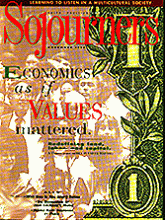Tony Campolo's first book on the environment, How To Rescue the Earth Without Worshipping Nature, beckons the church to take a leadership role in saving the planet. The "how to rescue the Earth" part of the title is an outline of the biblical case for environmental responsibility and charts practical ways churches and individuals may involve themselves in Earth care.
Campolo's approach to the second half of his title, "without worshipping nature," is moderately troublesome. In his attempt to draw the theological distinction between New Age environmental concern and the biblical case for Earth care, his critique is unduly harsh; it undermines his very attempt to bring together large numbers of people to rescue and safeguard our shared environment.
Having gained the attention and respect of mainstream evangelicalism in the United States over the past 15 years, Campolo's fervor for Christian environmentalism is hopeful. He admits, "Studies show that the more zealously committed people become to evangelical churches, the less concerned they are about the horrible things that are happening to the environment."
Campolo is one of the few voices speaking out about the environment to evangelicals who may not be tuned in to contemporary Christian articulations of environmental theology, to the historical example of God speaking to St. Francis of Assisi through animals, or the traditional example of Amish communities and their longstanding linkage of personal faith with farming methods.
To his credit, Campolo brings these and other examples together in his book, shaping a well-rounded theological perspective on care for the Earth. In addition to St. Francis and the Amish, he includes Martin Buber, John Wesley, Pierre Teilhard de Chardin, John Calvin, and the creation theology of the Eastern Orthodox Church.
Read the Full Article

